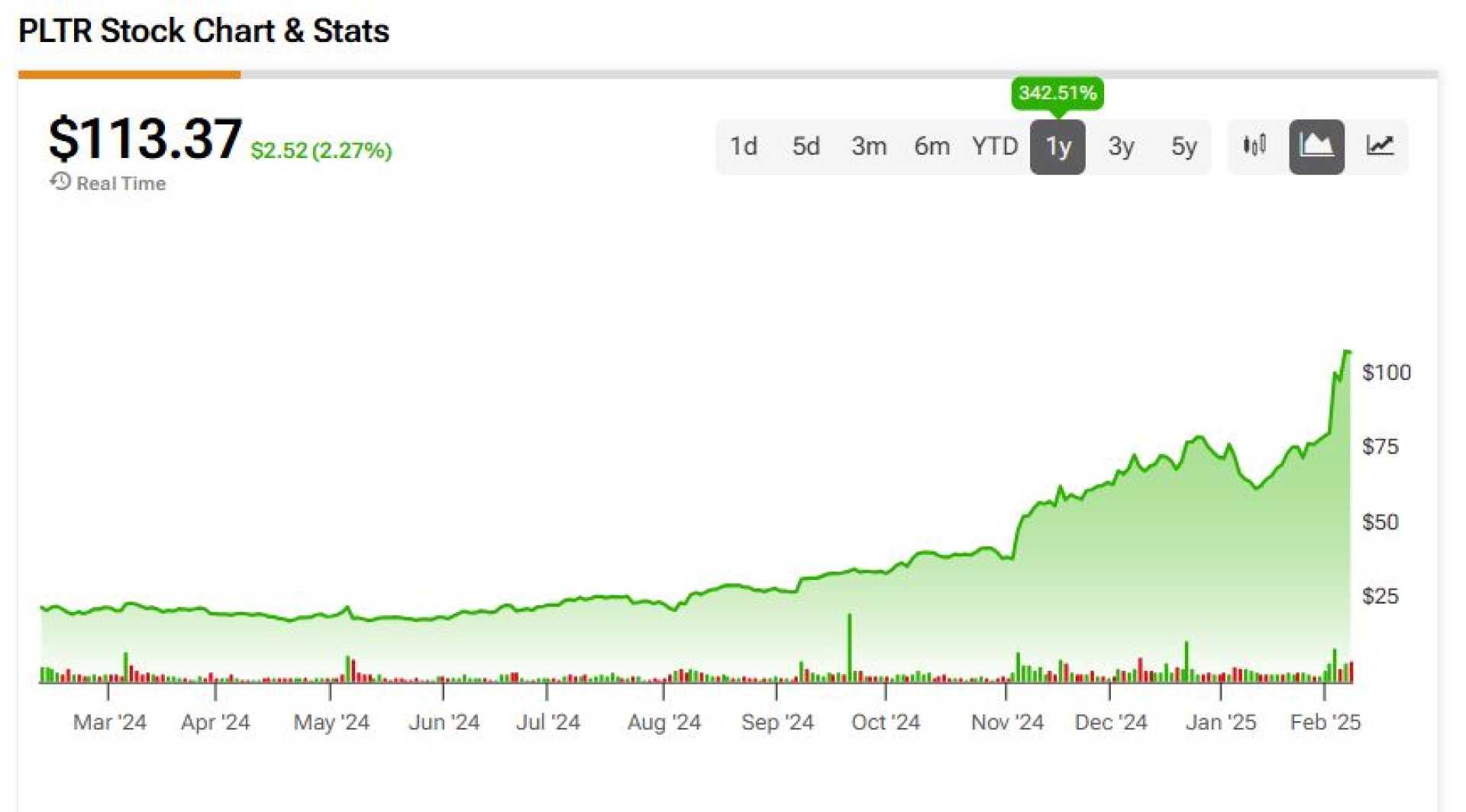Business
Palantir Technologies Surges: Is a Stock Split Next?

NEW YORK, NY — Palantir Technologies Inc. has seen its stock price skyrocket in recent months, rising from under $8 per share in early 2023 to $124.62 as of February 18, 2025, a staggering 1,700% increase that has captured investor attention. With the company’s market cap now at approximately $284 billion, speculation is swirling around a possible stock split as investors weigh the implications of this rapid growth.
The recent surge in Palantir shares is largely attributed to the artificial intelligence (AI) boom, with many analysts highlighting the firm’s impressive quarterly earnings. Palantir reported a 36% year-over-year revenue increase to $828 million for the fourth quarter of 2024, driven by a remarkable 52% rise in U.S. commercial revenue. CEO Alex Karp noted during the earnings call, “We are at the beginning of our trajectory. We are at the way beginning of a revolution,” underscoring the company’s optimistic outlook.
A stock split, which occurs when a company divides its existing shares into multiple new shares to lower the trading price, is seen as a move to enhance liquidity and make the stock more accessible to individual investors. While a split does not change the company’s overall market cap or intrinsic value, it can signal to the market that the company’s leadership believes their stock is performing well. Historical trends indicate that stock splits are often well-received, as they can encourage additional investments.
However, some analysts are cautious. Marko Kolanovic, previously with JPMorgan, has likened Palantir’s current valuation to that of “meme stocks,” suggesting there may be a disconnect between the soaring share price and underlying business fundamentals. Kolanovic remarked, “No matter how one looks at valuations, [it] doesn’t make a lot of sense,” indicating underlying concerns about the sustainability of Palantir’s rapid growth.
Despite this skepticism, Wall Street’s response has been uneven. While some analysts, like Wedbush‘s Dan Ives, remain bullish on Palantir’s potential in the AI market, the average 12-month price target from analysts remains approximately 29% below the current share price. This mixed sentiment leaves investors unsure about the company’s future trajectory and whether the gains experienced in recent years can be maintained.
Experts agree that a stock split could serve as a potential catalyst for future growth, as it allows more investors to participate without the burden of high share prices. Many retail investors prefer acquiring shares in greater quantities at lower price points rather than fractional shares, which poses a barrier to entry for some potential investors. Furthermore, it can assist employees holding large amounts of equity who may want to sell without impacting the market significantly.
While some investors are watching closely for a stock split announcement, they are also cautioned to base their investment decisions on the company’s lasting performance rather than speculation. Observing fundamentals and long-term growth projections should take precedence over short-term price movements. Given that stock splits have no direct impact on a company’s financial performance, investors should remain vigilant and focus on the sustainability of Palantir’s revenue growth.
As Palantir navigates the volatile landscape of the stock market and the evolving dynamics of the AI industry, the company’s future remains a subject of significant interest. Whether a stock split is imminent or not, individuals considering investing in Palantir should conduct thorough research and consider the broader implications of their financial strategies.












